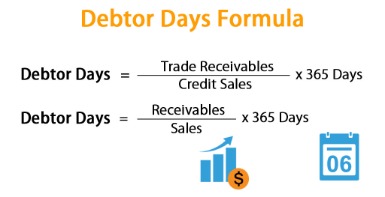
This helps to verify the accuracy of the recorded transactions and identify any bonding requirements discrepancies between the company’s books and the actual bank statement. Entering the ending balance in QuickBooks Online is a crucial step in the reconciliation process, ensuring that the financial records align with the closing balance of the bank statement. Reconciling in QuickBooks Online involves several key steps to ensure that the financial records align with the bank statement and reflect accurate transactional data. From accessing the reconcile tool to marking transactions as cleared, we’ve got you covered. We’ll delve into reconciling previous months, rereconciliation, and marking transactions as reconciled in QuickBooks Online.
Access the Reconcile Window
- Whether you’re using QuickBooks Online or QuickBooks Desktop, understanding the process of reconciliation is crucial for ensuring the accuracy and integrity of your financial records.
- Reconciliation is the process of fitting those pieces together accurately, creating a clear picture of your financial landscape.
- During a reconciliation, you compare an account in the accounting system, such as QuickBooks, to its real-life counterpart to make sure everything matches.
- This can happen if you’re reconciling an account for the first time or if it wasn’t properly reconciled last month.
It entails reviewing each transaction, comparing it with the corresponding bank statement entry, and making any necessary adjustments to ensure the accuracy of the records. This process typically begins by obtaining the bank statement and gathering all relevant transaction details from within QuickBooks Desktop. Any discrepancies should be thoroughly investigated and adjusted in QuickBooks to reconcile the balances accurately.

Add bank-only transactions to your book balance
This final step is crucial for ensuring the accuracy and integrity of the financial data. After verifying the transactions and ensuring their alignment with the bank statement, QuickBooks Online allows users to mark the reconciliation as complete. This signifies that all transactions have been examined and matched, providing a clear and accurate representation of the company’s financial position. Are you looking to master the art of reconciliation in QuickBooks?
Reconcile an account
This process directly impacts the balance sheet accounts, transactions, and banking activities. It provides a clear and accurate picture of the company’s financial health, enabling informed decision-making. This process involves meticulously reviewing each transaction entry in QuickBooks and cross-referencing it with the corresponding entry in the bank statement. By performing this comparison, discrepancies such as missing transactions, duplicate entries, or incorrect amounts can be readily identified. This not rc_go_100 4 secondary marketing basics only helps in maintaining accurate financial records but also serves as a crucial reconciliation step to ensure that the company’s books reflect the true financial position.
Adjusting transactions in QuickBooks is necessary to rectify any disparities identified during the comparison with the bank statement, ensuring the accurate synchronization of financial records. Marking transactions as cleared in QuickBooks Desktop signifies the validation of these transactions against the bank statement, contributing to the accuracy of the reconciliation process. Marking transactions as cleared in QuickBooks Online signifies the validation of these transactions against the bank statement, contributing to the accuracy of the reconciliation process. Reconciling statements with your QuickBooks company file is an important part of account management. It ensures that QuickBooks entries align with those in your bank and credit card account statements.
Review cleared transactions
Balancing accounts might sound like a tedious task, but its significance cannot be overstated. Think of your business finances as a puzzle — every transaction, every payment, every deposit is a piece of that puzzle. Reconciliation is the process of fitting those pieces together accurately, creating a clear picture of your financial landscape.
If everything matches, you know your accounts are balanced and accurate. This step involves accessing the ‘Reconcile’ feature, selecting what is work in progress wip? the appropriate account, and entering the closing balance provided by the bank. By doing so, it helps in detecting any discrepancies between the company’s records and the bank statement, thereby ensuring the accuracy of financial data. We strongly recommend performing a bank reconciliation at least on a monthly basis to ensure the accuracy of your company’s cash records.
A monthly reconciliation helps to catch and identify any unusual transactions that might be caused by fraud or accounting errors, especially if your business uses more than one bank account. This process plays a crucial role in maintaining the integrity of financial data and safeguarding against discrepancies. By reconciling transactions, users can confidently rely on the accuracy of their financial reports, ensuring that each transaction has been properly accounted for and is consistent with the bank statement. This process is crucial in achieving reconciliation accuracy, as it involves reviewing and making necessary modifications to account for any discrepancies. By adjusting transactions, users can ensure that their financial data aligns with the actual bank activity, minimizing errors and enhancing the overall reliability of the financial statements.

0 Comment